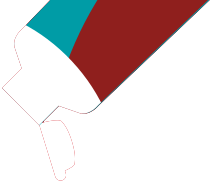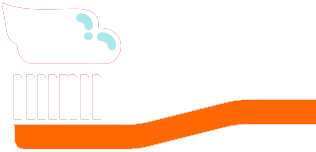As you dine at your favorite restaurant surrounded by some of your best friends, you're probably not thinking about how vital your jaw is to this special pastime. But from chewing (mastication), biting, and clenching to speaking and singing, your lateral pterygoid muscle, also called the external pterygoid muscle, plays a pivotal role in your jaw's essential functions. Learning about this muscle may be especially helpful if you are ever diagnosed with a temporomandibular joint (TMJ) disorder. While we all take our jaw's functions for granted, it's when it begins to hurt that we realize how essential it is for our daily needs. We're here to tell you more about the anatomy of your lateral pterygoid muscle, how it may contribute to TMJ pain, and how to find relief!

Could Your Lateral Pterygoid Muscle Be Causing TMJ Pain?
Medically Reviewed By Colgate Global Scientific Communications
Anatomy of the External Pterygoid Muscle
Your lateral pterygoid is a small, thick muscle found on both sides of your skull, just below the temples. This muscle has two "heads" that originate from sections of the skull's sphenoid bone, which has several other projected muscles. Both of the heads of your lateral pterygoid attach to the mandibular condyle. This is where the lower jawbone and the temporomandibular joint meet.
While that description has many terminologies you probably are unfamiliar with, what's most important to understand is that your lateral pterygoid has the primary responsibility of opening the mouth. It is the strongest muscle involved in moving your jaw side to side and forward and back, enabling you to grind and chew food, speak, and sing!
Trigger Points and TMJ Complications
If you've ever felt discomfort when chewing or a sore sensation in your jaw muscles when you first wake up in the morning, you are not alone! The National Institute of Dental and Craniofacial Research estimates that more than 10 million Americans experience some type of TMJ disorder, with more women experiencing it than men.
Think about how many times a day you open your mouth to talk or chew food. It's no wonder the lateral pterygoid is one of the most heavily used working muscles of your mouth! According to a review published in the Journal of Bodywork & Movement Therapies, it can develop a trigger point. A trigger point can lead to lateral pterygoid muscle pain. Think of this trigger point as similar to a knot you get in your neck when you sleep in an odd position. It's uncomfortable and pretty persistent until you get it out. And the trigger point found in your lateral pterygoid can actually lead to discomfort and pain in your TMJ. This is because it's related to the TMJ and plays a crucial role in TMJ dysfunction.
Still, you're probably wondering the exact relationship between your pterygoid muscle pain and a potential TMJ dysfunction. The lateral pterygoid is one of the muscles that can play a role in any number of TMJ disorders. But TMJ conditions are complex, and sometimes it's difficult to determine the precise cause of the issue. As noted by the National Institute of Dental and Craniofacial Research, there are three main groupings of conditions that your TMJ disorder can fall into:
- Arthritis. A group of degenerative or inflammatory disorders.
- Myofascial pain. Discomfort in the surrounding muscles that are responsible for jaw function.
- Internal derangement of the joint. It could involve a dislocated jaw, displaced disc, or injury to the condyle (which the lateral pterygoid attaches to).
Treatment for TMJ Problems
While there's a potential for TMJ problems to go away on their own, but here are some recommendations to help ease your symptoms:
- Eat soft foods and avoid chewing gum.
- Apply ice packs or heat packs to your face.
- Take prescription or over-the-counter pain relief medications.
- Wear a mouthguard.
- Practice muscle relaxation exercises to reduce stress and lessen tension in your jaw muscles.
- Try physical therapy.
You should always consult a medical or dental professional if your TMJ pain persists or if it's so severe that you're unable to open your jaw. They can help you determine your pain source, recommend one of the above ways to relieve your TMJ pain, or discuss other solutions with you.
While the show must go on - eating, talking, singing, and laughing - keep in mind that your lateral pterygoid muscle can get overworked like any other muscle! If you have persistent lateral pterygoid muscle pain symptoms, we always recommend seeing a dental or medical professional vs. deciding to tough it out on your own. Getting a clinical evaluation will empower you to make the best treatment plan. It may also help you understand the root cause of your pain. Since we rely on our jaw muscles for so many everyday activities, it's no fun when they become sore. But we believe that taking concrete action like mindful at-home practices and consulting a professional will put you on the best path towards pain relief!
This article is intended to promote understanding of and knowledge about general oral health topics. It is not intended to be a substitute for professional advice, diagnosis or treatment. Always seek the advice of your dentist or other qualified healthcare provider with any questions you may have regarding a medical condition or treatment.







